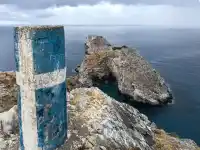The Colosseum and the Forum Romanum are two of the most overlooked monuments of ancient Rome, attracting hundreds of thousands of tourists daily and filling the city’s coffers. We couldn’t miss it.
If you want to get in, buy your tickets online. They are reserved for the exact time of entry. Morning dates are undoubtedly acceptable for enthusiastic tourists, but not for Johny (my partner), who needs to wake up naturally and then have a three-course breakfast with a siesta. We barely made that eleven o’clock metro transfer to Termini.
Johny’s erotic wanderings

Already in the subway there was a small misunderstanding when a slightly younger beauty started poking my friend from the side. He looked at me meaningfully, like, “I don’t belong in the scrap yard yet”. I only brought him out of his mistake after I capped the lady’s fingers when she had Johny’s wallet almost out of her pocket. It quickly disappeared, as did Johny’s belief about his infinite attractiveness. The eroticism didn’t take place this time, and we should remember that when a 68-year-old grandfather is pressured by a thirty-something woman, he usually expects only a personal financial revolution. I told Janek not to wear that Austrian jacket.
Back to antiquity
The Forum Romanum was the main square that was the heart of Rome during its heyday. It was where the city’s inhabitants gathered, and various business, meetings and public ceremonies were conducted.
Forum Romanum
It stands on the site of a former swamp that served as a burial ground for villagers from the surrounding hills. Around 600 BC, the area was drained and filled in with earth. The Forum Romanum became the most important public space and the heart of Rome during its peak period. It was located in the city’s central part and surrounded by the most important buildings and temples.
One of its oldest monuments is the Temple of Saturn. During the Saturnalia period, slaves were given freedom and did not have to serve. People visited and gifted each other. This holiday, in the form of today’s Christmas, has endured.
Deities of Ancient Rome

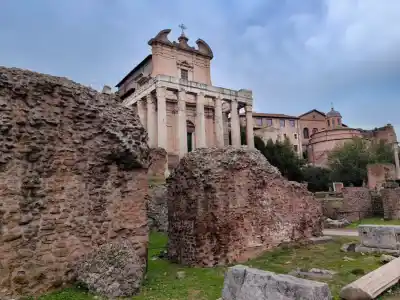


Two of the oldest temples of Vesta and Saturn were dedicated to the gods Vesta and Saturn. They were used for religious sacrifices. One of the most prominent structures was the Basilica of Julius (not much of it remains). It housed shops and offices. Under its arcades, banking and heirship proceedings were also conducted.
Only 3 Corinthian columns 15 m high have survived from the Temple of Vespasian. We can only guess what a magnificent building it was. Next door is the Septimia Severa, one of the three triumphal arches in the area. It celebrates the victory of Emperor Septimius over the Parthians (present-day Iraq and Iran).
Castor and Pollux
They were considered demigods and protectors of Rome. The Romans built their own temple on the spot where they supposedly watered their horses. God knows what they were protecting in Bratislava because even here, they renamed the former Luxorku tavern to Castor and Pollux 🙂




According to Roman legend, Castor and Pollux appeared to the Roman army in a battle against the Latins in 499 BC and helped them achieve victory. Therefore, they became popular among the Roman soldiers, and the army spread their cult throughout the Roman Empire.
The temple was built in the 5th century BC and was one of ancient Rome’s most important and most visited sites. The annual festival of the “Ludi Romani”, dedicated initially to Castor and Pollux, originated here. Theatres, sports competitions, and public events, but for the Romans, it was a world to live in.
Arco di Tito
The entrance from the Colosseum is dominated by one of Rome’s most essential arches, built in 81 AD during the reign of Emperor Tito to celebrate his victory in the Jewish wars.


Via Sacra
In addition to the Via Appia, Rome has another holy way. The Via Sacra crosses the entire Forum Romanum from west to east. Along this road, all the victorious emperors, generals and conquerors have walked. If you walk along the road, the massive building of the Basilica di Massenzio, built in the 4th century AD, will take your breath away from a distance. It was used for judicial and commercial purposes. There are also the surprisingly well-preserved temples of Romulus and Remus and, below, the Temple of Antoninus and Faustina.
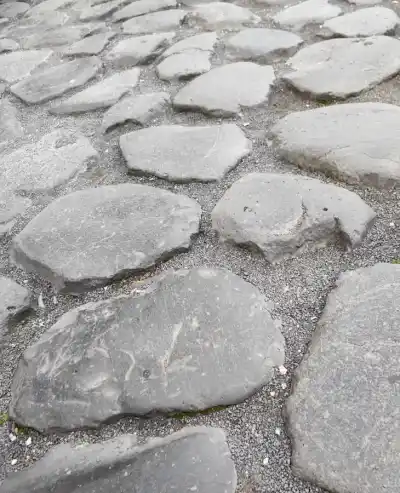

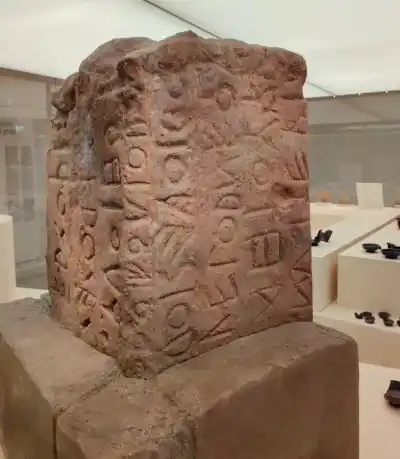
Palatine Hill
Rome is said to stand on seven hills. Palatine Hill, part of the Forum Romanum, was one of the most important sites in ancient Rome. It was inhabited by emperors and rulers. Some of the most famous and essential emperors and rulers who resided on the Palatine Hill were Augustus, the first emperor of the Roman Empire, who founded the Julio-Claudian dynasty. After his death, Tiberius moved to the hill.
However, the most remembered are the third emperor, Caligula, known for his depravity and eccentric behaviour, and especially the fifth emperor Nero, who introduced terror and persecution of Christians. He was also known for his theatrical creations and brilliant ideas. One of them was to burn Rome.
However, the last emperor of the Flavian dynasty, Domitian, had the greatest works of architecture and palaces of the Palatine Hill built.
In addition to the emperors, many other Roman rulers, patrons and gods resided on Palatine Hill, such as Julius Caesar, Cicero, Ovid and Apollo. Many festivals and competitions were also held here.
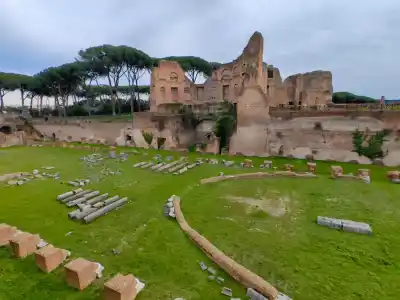



Circus Maximus
On the other side of the Palatine Hill is the Circus Maximus, a remnant of a giant stadium for fighting sledges and horse races. It’s a good place to picnic today. By the way, there is an excellent Easy Bike rental shop at the bottom. The boss has promised me better-equipped bikes if I mention it in a complimentary way, so I’m doing it this way and mentioning it in a complimentary way. The evening view of Palatine Hill from my bike is spectacular.

When the Colosseum and the Forum Romanum are not enough
Julius Ceasar also had a big ego. There needed to be more than the Forum Romanum for him. So he built his own Forum just next door. (Today’s excavations behind the Plazza Venezia) At the end of the Forum, he had the Temple of Venus built. The reason was simple. He claimed to be a descendant of Venus and thus actually declared himself a demigod. Only three columns of the temple remain. 🙂
Emperor Augustus was not spared either. He also had his own Forum built. He was enthroned by the temple of MARS, dedicated to the god of war. Guess why?
To top it off, Trajan’s Forum grew up. Today it is commemorated only by a column with a spiral relief from the Dacian Wars, commemorating his victory over the Dacians. (ancestors of today’s Romanians). The Romans didn’t just fight. They are said to have brought back 163 tons of gold and twice as much silver from this campaign alone. Fortunately, they didn’t know investment brokers back then.

A new era of Rome has begun to be written by the Vatican. Walk out of Piazza Venezia on Michelangelo’s steps, guarded again by Castor and Pollux. You will reach another hill – the Capitol. It is dominated by the Senatorial Palace and the statue of Marcus Aurelius. The palace now houses the town hall. We discovered a fantastic full-size view of the Roman Forum from behind it.
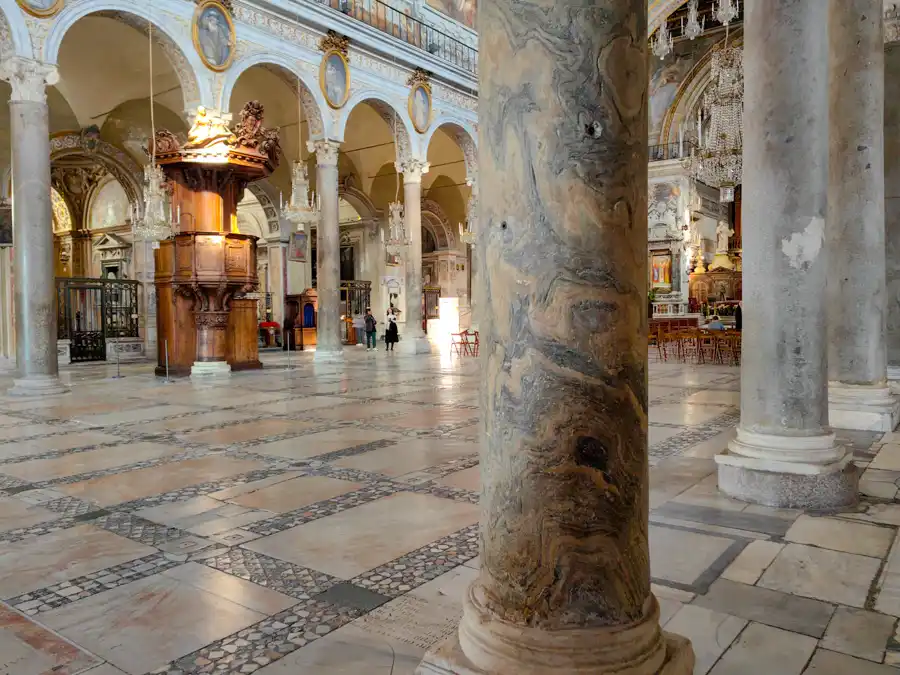

A few steps up is the Basilica of the Virgin Mary on the Altar of Heaven. (Santa Maria Maggiore) It was rebuilt in 1250 from an old Byzantine palace from the 6th century. Impressive. Each column is different and comes from a different monument. Also, there is one from Ostia Antica. 🙂 The treasures of the basilica also include the magnificent coffered ceiling and the tomb of Bernini.
Leaving the Forum Romanum, we visit Rome’s most overlooked attraction – the Colosseum. Actually, the opposite. Every tourist starts at the Colosseum.
Colosseum
The Colosseum, also known as the Flavian Amphitheatre, is a gigantic structure built between 70-80 AD during the reigns of the Roman emperors Vespasian and his son Titus. It stands on the site of an artificial lake in the garden of Nero’s Golden House at the end of the Forum Romanum.
The Colosseum served as an amphitheatre for various cultural events, such as gladiator fights, wild animal fights, and spectacles of essential battles. They usually ended in blood.

Dental practices
If you want to take an exciting photo in front of the Colosseum, ditch the antics and watch the tourists. It’s like at the dentist. I don’t know why everyone needs to grin, floss their teeth and look endlessly happy. Even if he’s standing in an hour-long line and walking in a two-step.
The Colosseum has an oval shape, three arcades and an attic up to 48m high. In its glory days, it had a capacity of up to 80,000 spectators. It is the largest amphitheatre ever built. It was built of concrete and stone and was divided into three levels with arches and columns of Roman architecture.




The place took into account the hierarchy
Below the emperor, the nobility and the upper nobility. In the middle, the bourgeoisie and the middle class. Above the plebs and the slaves. The amphitheatre had 80 entrances. The underground spaces of the Colosseum called the hypogeum (we bought beer rather than extra), were used by the Romans as a backroom for gladiators and animals. When needed, elevators pulled them up to the arena so the culture could begin.


Colosseum history
The Colosseum has undergone many changes over the centuries. It has served various purposes, including housing for the poor and shelter for Christians during persecution, eventually as a quarry.
During the 7th century, the Colosseum gradually began to deteriorate due to the economic decline of the Roman Empire. Thanks to an earthquake and several fires, it almost disappeared. The clever Romans cut most of the stone from it when constructing new buildings in Rome. Still, the Colosseum remains an iconic site not only of Rome but of all of Italy.



Tip: Get your tickets online in advance. Otherwise you won’t even get in.
More articles from Rome
- Cycling Roma
- Via Appia
- Ostia Antica



